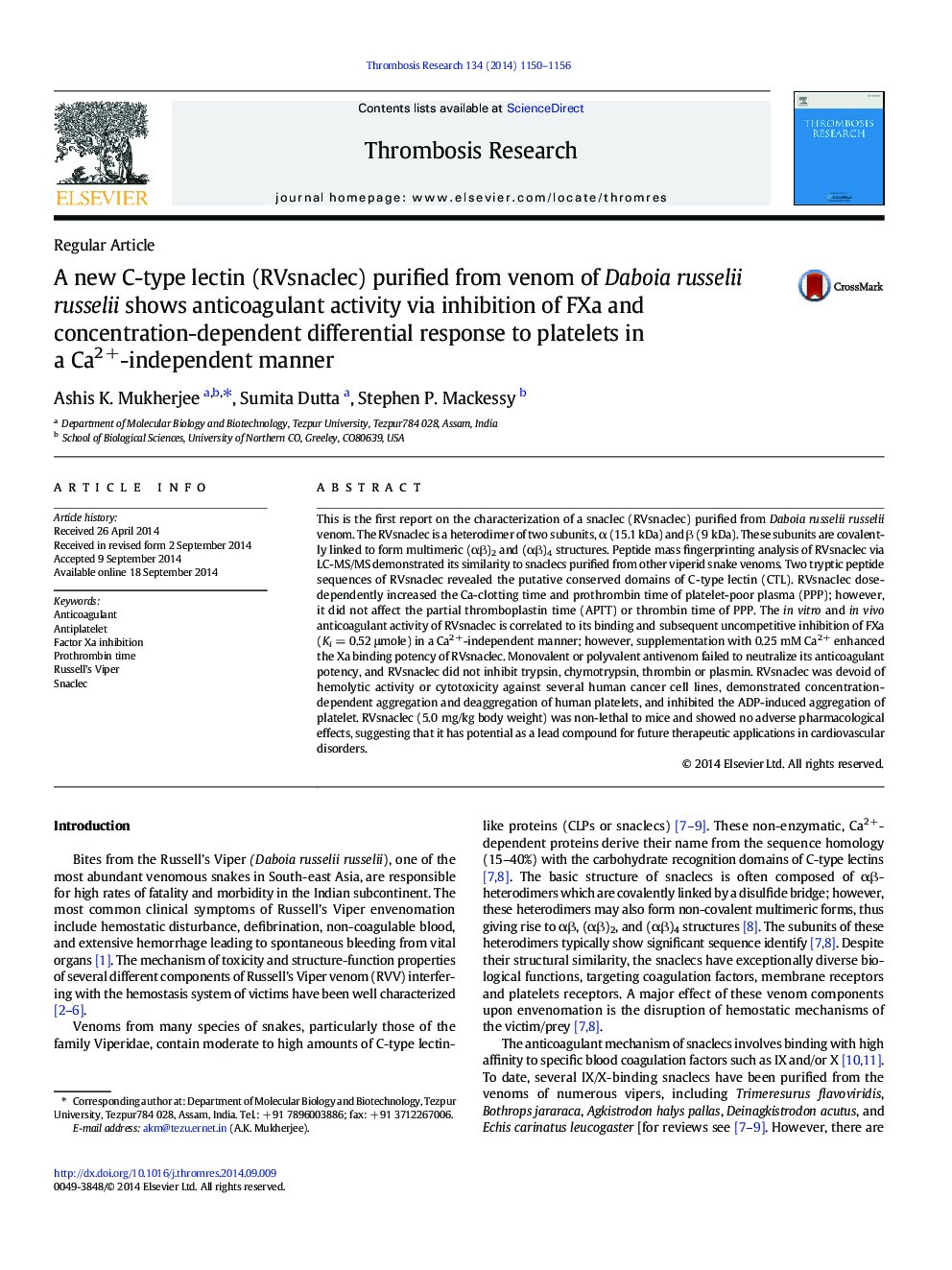| Article ID | Journal | Published Year | Pages | File Type |
|---|---|---|---|---|
| 6001775 | Thrombosis Research | 2014 | 7 Pages |
â¢RVsnaclec is a heterodimer of two subunits α (15.1 kDa) and β (10 kDa)â¢These subunits via covalently linkage form multimeric (αβ)2 and (αβ)4 structuresâ¢Its anticoagulation is correlated to binding and inhibition of FIX/FXa in a C2 + independent mannerâ¢RVsnaclec does not inhibit trypsin, chymotrypsin, thrombin, and plasminâ¢At a dose of 5 mg/kg (i.p) RVsnaclecs is non-lethal to mice
This is the first report on the characterization of a snaclec (RVsnaclec) purified from Daboia russelii russelii venom. The RVsnaclec is a heterodimer of two subunits, α (15.1 kDa) and β (9 kDa). These subunits are covalently linked to form multimeric (αβ)2 and (αβ)4 structures. Peptide mass fingerprinting analysis of RVsnaclec via LC-MS/MS demonstrated its similarity to snaclecs purified from other viperid snake venoms. Two tryptic peptide sequences of RVsnaclec revealed the putative conserved domains of C-type lectin (CTL). RVsnaclec dose-dependently increased the Ca-clotting time and prothrombin time of platelet-poor plasma (PPP); however, it did not affect the partial thromboplastin time (APTT) or thrombin time of PPP. The in vitro and in vivo anticoagulant activity of RVsnaclec is correlated to its binding and subsequent uncompetitive inhibition of FXa (Ki = 0.52 μmole) in a Ca2 +-independent manner; however, supplementation with 0.25 mM Ca2 + enhanced the Xa binding potency of RVsnaclec. Monovalent or polyvalent antivenom failed to neutralize its anticoagulant potency, and RVsnaclec did not inhibit trypsin, chymotrypsin, thrombin or plasmin. RVsnaclec was devoid of hemolytic activity or cytotoxicity against several human cancer cell lines, demonstrated concentration-dependent aggregation and deaggregation of human platelets, and inhibited the ADP-induced aggregation of platelet. RVsnaclec (5.0 mg/kg body weight) was non-lethal to mice and showed no adverse pharmacological effects, suggesting that it has potential as a lead compound for future therapeutic applications in cardiovascular disorders.
